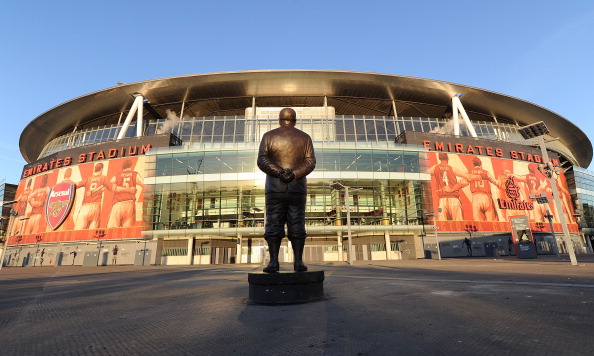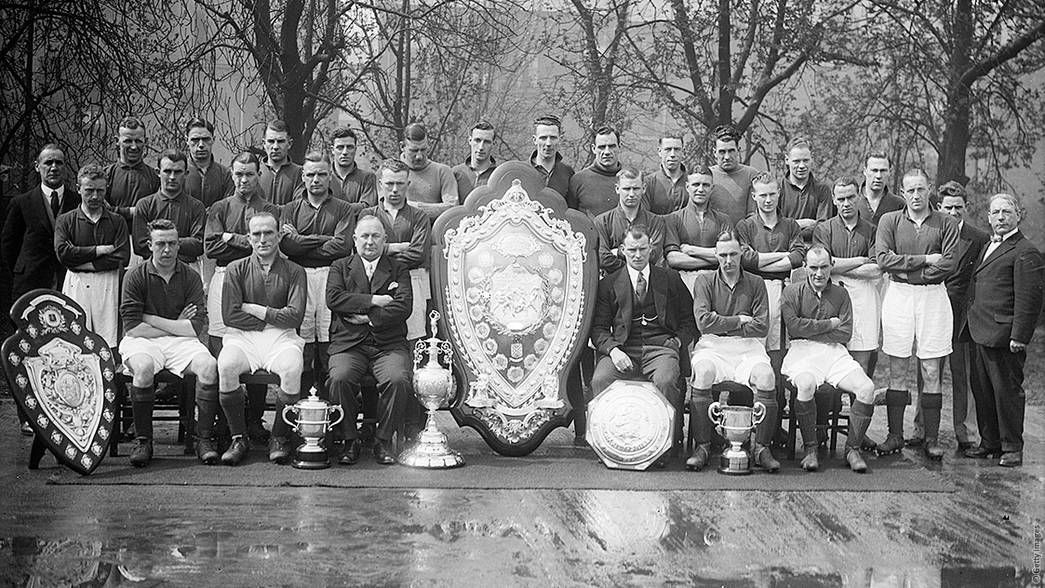Early Life & Career
Herbert Chapman (1878–1934) was born on January 19 in a small mining village, between Worksop and Sheffield, in Yorkshire. After a journeyman playing career as an inside forward, Chapman began his managerial career at Northampton Town. Having won the Southern League Title in 1909, and seen his side play well against First Division sides in the FA Cup, Chapman took the opportunity to manage Second Division Leeds City. The Elland Road side struggled to achieve promotion, but Chapman recruited players that fit his attacking vision; more goals led to bigger crowds, but the outbreak of World War One was to bring league football to a halt. Chapman stepped away from the game, becoming manager of a munitions factory.
Herbert Chapman’s legacy was to be built with two previously unfashionable clubs after the war. In 1921, Huddersfield Town tempted him back to the game. It was here that he would demonstrate the importance of a dedicated manager who oversaw all elements of the club; making shrewd signings, imposing his tactics and coaching methods, and working with reserve sides and scouts were all jobs Chapman took on himself. He led Town to their first (and only) FA Cup win in his first full season in charge; consecutive First Division titles were to follow in 1923 & 1924.
Chapman’s methods and results were gaining attention across the country. In May 1925 Chapman responded to an advertisement by Arsenal Football Club searching for a team manager, insisting that ‘Gentlemen whose sole ability to build up a good side depends on the payment of heavy and exorbitant transfer fees need not apply’. The Arsenal, at the time a mid-table side with limited support, made a bold move when making Chapman England’s highest-paid football manager in 1925. In return he asked for 5 years to realise his vision for the club.
Arsenal Success

Chapman brought the same single vision to the Highbury team as he had at Huddersfield. The same year that he became Arsenal manager, a change in the offside rule made Chapman realize that there was no point having attacking players on the front line, as was the style of the time; many teams playing a 2-3-5 formation. He changed his team to a 3-4-3 formation, with two midfielders able to go back and help defend with the other two going forward to help attack. Tactically, Chapman’s vision became known as the ‘WM’ formation – a 3-2-2-3 with defenders feeding the ball to wingers who could counter-attack at pace. This formation also made it easier for Arsenal to counter-attack, a favorite tactic of Chapman since his Northampton days.
With the club moving in the direction Chapman had wanted and the right players picked by him and playing to his revolutionary tactics, he led Arsenal to their first ever trophy when they won the FA Cup in 1930. Arsenal went on to win their first ever league title in the 1930-31 season, single-handedly down to the incredible work of Herbert Chapman. They still hold the club record for most goals scored in a title-winning season with 127.
The fast flowing counter-attacking football centred on a strong defensive unit that had been championed by Chapman was now hitting perfection and he laid the foundations for Arsenal to become the dominant side of the decade. However, whilst his team were mid-way through a run of three successive Division One titles, 55 year old Chapman succumbed to a bout of pneumonia and died at home. His Arsenal team went on to win back to back Football League titles soon after his passing and his legacy is still alive today in so many different areas of the beautiful game.
Innovations & Legacy
Many of Chapman's innovations survive to this day, things that seem so basic and obvious to us were unheard of in his time:
- The idea of the manager picking the team, it previously being done by board members.
- The idea for teams to train and have meetings between matches, he also encouraged his players to play other sports during offseason in order to keep fit.
- Chapman was also an advocate of floodlit football matches. He had them installed at Highbury in 1932, but the FA disallowed Arsenal to use them for matches. They were only used so the team could train in the evenings. It took the FA until 1950's to legalize floodlit football matches.
- He often took his teams to Europe to play friendly matches, and was supportive of a pan-European tournament 20 years before the European Cup was created.
- Chapman was also one of the first managers to sign black and foreign players, signing striker Walter Tull whist at Northampton and trying to sign Austrian international Rudy Hiden for Arsenal, but the moved was blocked by the goverment's Ministry of Labour.
- Even some of the basics of football were his ideas, such as players wearing numbered shirts, the semi-circle on the penalty area to keep players back whilst a penalty is being taken, or a white ball being used as it was easier to see on a muddy pitch.

